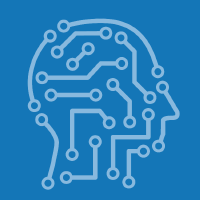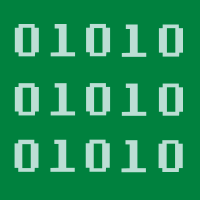Topic Menu
► Topic MenuTopic Editors



Lightweight Deep Neural Networks for Video Analytics
Topic Information
Dear Colleagues,
The tremendous amount of video data generated by camera networks installed in industries, offices, and public places meets the requirements of Big Data. For instance, a simple multi-view network with two cameras, acquiring video from two different views with 25 frames per second (fps), generates 180,000 frames (90,000 for each camera) in an hour. Surveillance networks acquire video data for 24 hours from multi-view cameras, making it challenging to extract useful information from these Big Data. Indeed, significant effort is required when searching for salient information in such huge-sized 60 × 60 video data. One critical application in video analytics is detecting anoma-lous events such as traffic accidents, crimes, or illegal activities in surveillance videos. Generally, anomalous events occur rarely compared to normal activities. Therefore, developing intelligent lightweight computer vision algo-rithms for automatic video analytics is a pressing need to alleviate the waste of labor and time. Such automatic methods will not only be helpful in monitoring but also reduce the human effort required to maintain manual ob-servation on a 24-hour basis. Thus, automatic techniques are required to extract pertinent information present in videos without involving any human effort, such as video summarization, human action/activity recognition, video object tracking, violence detection, and crowd counting. These technologies can be integrated for efficient and in-stant analysis of surveillance, entertainment, and medical video Big Data. This Topic invites original works revealing the latest research advancements in conventional machine learning and deep learning methods that deeply analyze patterns from video streams for various real-time applica-tions. The topics of interest include but are not limited to the following:
- Human action and activity recognition;
- Efficient spatiotemporal feature representation;
- Lightweight 2D and 3D convolutional neural networks for video analytics;
- RGB/depth/skeleton-sensor-based action recognition;
- Video summarization and scene segmentation;
- Violence/anomaly detection;
- Embedded vision for video analytics;
- Sensors/multi-sensor integrations for activity recognition;
- Activity localization, detection, and context analysis;
- IoT-assisted computationally intelligent methods for activity recognition;
- Cloud/Fog computing for action and activity recognition;
- Benchmark datasets for action/activity/anomaly recognition.
Dr. Amin Ullah
Dr. Tanveer Hussain
Dr. Mohammad Farhad Bulbul
Topic Editors
Keywords
- artificial intelligence
- machine learning
- computer vision
- deep learning
- video analytics
- feature extraction
- feature selection
- action recognition
- activity recognition
- video object detection
- video object tracking
- anomaly detection
- embedded vision
Participating Journals
| Journal Name | Impact Factor | CiteScore | Launched Year | First Decision (median) | APC |
|---|---|---|---|---|---|

AI
|
- | - | 2020 | 20.8 Days | CHF 1600 |

Algorithms
|
2.3 | 3.7 | 2008 | 15 Days | CHF 1600 |

Information
|
3.1 | 5.8 | 2010 | 18 Days | CHF 1600 |

Multimodal Technologies and Interaction
|
2.5 | 4.3 | 2017 | 14 Days | CHF 1600 |

Sensors
|
3.9 | 6.8 | 2001 | 17 Days | CHF 2600 |

Mathematics
|
2.4 | 3.5 | 2013 | 16.9 Days | CHF 2600 |

MDPI Topics is cooperating with Preprints.org and has built a direct connection between MDPI journals and Preprints.org. Authors are encouraged to enjoy the benefits by posting a preprint at Preprints.org prior to publication:
- Immediately share your ideas ahead of publication and establish your research priority;
- Protect your idea from being stolen with this time-stamped preprint article;
- Enhance the exposure and impact of your research;
- Receive feedback from your peers in advance;
- Have it indexed in Web of Science (Preprint Citation Index), Google Scholar, Crossref, SHARE, PrePubMed, Scilit and Europe PMC.

